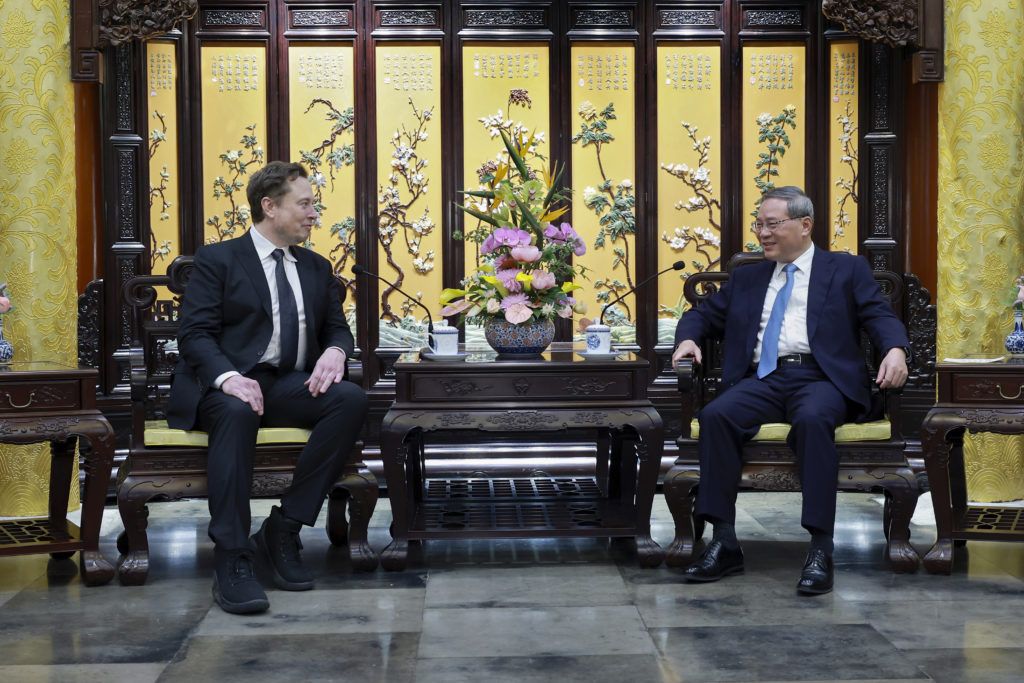AIKEN, S.C. — When Nikki Haley ran for governor of South Carolina in 2010, one of her early campaign stops was the Aiken, South Carolina, living room of Claude and Sunny O’Donovan.
Claude O’Donovan, the co-founder of a local Tea Party group, had invited Haley and other candidates to make their case to the conservative activists of Aiken County, a heavily Republican enclave of golf courses and retirement communities. The crowd that gathered around the O’Donovans’ coffee table numbered only a couple dozen. But the retired couple was smitten.
“We fell in love with her,” O’Donovan, 85, said. “She was a dynamite gal.”
Sign up for The Morning newsletter from the New York Times
A digital picture frame in the O’Donovans’ home still displays a photograph of Haley at the meeting. But on Feb. 24, when Haley faces former President Donald Trump in South Carolina’s Republican presidential primary, both of the O’Donovans plan to vote for Trump.
“I think he has the values of the Tea Party,” Sunny O’Donovan, 84, said. “It was for the people, and I see Trump as being for the people.”
Recent polls show Trump leading Haley by 36 points in South Carolina. A decisive loss would move the Republican nomination further out of reach and provide a painful coda to her political career in her home state.
A Trump win in South Carolina would also write the final chapter of one of the most important political stories of the last decade: the story of how Trump entered politics amid a transformative grassroots movement and then absorbed that movement into his own.
In the early years of Barack Obama’s presidency, the Tea Party movement channeled outrage over bank bailouts and right-wing animosity toward the new president and his policies into a wave of midterm triumphs, winning Republican majorities in Congress and statehouses and minting a new generation of political stars, including Haley.
Four years later, initially skeptical Tea Partiers embraced Trump, who, as candidate and president, offered a supercharged version of the movement’s antipathy toward immigrants, fear of a changing country and anti-establishment fervor.
In Haley’s state, where the Tea Party movement was unusually influential, Trump notched an early victory in his 2016 presidential bid.
“The kind of folks that were Tea Party in 2010 are part of the MAGA movement in 2024,” said Scott Huffmon, a political science professor at Winthrop University in Rock Hill, South Carolina, and director of the Winthrop Poll. “We owe all this to the Tea Party.”
Today, few of the original Tea Party organizations remain. But their former dominance, and then dissolution into Trump’s camp, goes a long way toward explaining how South Carolina abandoned its once-favorite daughter for a former Democrat from New York.
Olivia Perez-Cubas, a spokesperson for Haley’s campaign, defended the former governor’s movement credentials. “Just like when she ran for governor, Nikki is the outsider, conservative candidate,” she said in a statement.
But even some once-dedicated supporters have moved on.
“Yes, he’s the crazy uncle at Thanksgiving,” said Jane Page Thompson, a co-founder of Claude O’Donovan’s Tea Party group who also hosted a Haley fundraiser in Aiken during her governor’s run, said of Trump. “But right now America needs the crazy uncle at Thanksgiving — not the snowflake niece.”
From ‘Nikki, Who?’ to No. 1
In the heyday of the Tea Party, South Carolina was home to dozens of local groups associated with the movement.
Haley credited their endorsement for her ascent in 2010. “You took me from ‘Nikki, who?’ to first in the polls,” she told a meeting of the Myrtle Beach Tea Party not long before winning the Republican nomination.
It had taken the state’s conservatives time to warm to Haley, the child of immigrants from India who was then in her third term as a state legislator. Early in the governor’s race, Tea Party groups mostly favored Larry Grooms, a socially conservative state senator. They coalesced around Haley after Grooms dropped out, and after Gov. Sarah Palin of Alaska endorsed Haley.
But Haley endeared herself by pushing for on-the-record voting in the General Assembly, an accountability measure championed by Tea Party activists who, like Haley, railed against the state’s clubby political culture.
Once she was in office, however, some Tea Party activists grew suspicious of her. She split with them on a contentious tax provision and then did not block a federal grant related to the Affordable Care Act. The Governor’s Tea Party Coalition, an advisory council Haley formed, drew further skepticism, and was quietly abandoned after a single meeting.
“They just never called us back,” said Allen Olson, then the chair of the Columbia Tea Party and the leader of the coalition. He plans to vote for Trump this month.
Rob Godfrey, then Haley’s spokesperson, attributed some of the disillusionment to the Tea Party activists’ own ambitions.
“The Tea Party in a lot of ways was a curious combination of a few true believers and a lot of people looking for the same government jobs held by bureaucrats they claimed to be suspicious of,” said Godfrey, who is not affiliated with Haley’s presidential campaign.
Tea Party veterans interviewed recently argued that it was Haley herself who had changed, refashioning herself as a rising star in a more inclusive, forward-looking Republican Party.
As evidence they pointed to her call to remove the Confederate battle flag from the grounds of the State House in Columbia following a racist mass shooting at a Black church in Charleston in June 2015. Haley was “completely managed by what that would mean for her future political aspirations,” Thompson said. “It showed me that that would always be a priority for her.”
But Olson, who supported the flag’s removal, recalled it offending many Tea Partiers for less high-minded reasons.
“I’ll be honest, a lot of the Tea Party members were very much ‘states’ rights’ people,” he said, referring to the long-standing claim that the Civil War was not fought principally over slavery, “and did rally around the Confederate flag.”
Trump Sees a Constituency
By then, the Tea Party was diminished as a force — and its supporters were already gravitating toward a new champion.
Trump, who declared his candidacy shortly before the flag debate, made few gestures toward the libertarian economics championed by the Tea Party and once in office added more to the deficit than either Obama or George W. Bush. Instead, he had won attention from Tea Partiers by fanning the flames of conspiracy theories about Obama’s birth certificate and the construction of an Islamic cultural center near ground zero in lower Manhattan.
Some national Tea Party organizers had labored to keep such preoccupations on the fringes of the movement, but they remained persistent among its rank-and-file supporters and local activists.
“It was an ethnonationalist passion about a changing America,” said Theda Skocpol, a Harvard University professor of government and sociology who has studied the Tea Party movement. “And that is something that Trump ended up picking up on.”
Trump saw the movement as a natural constituency. At a January 2015 Tea Party conference in Myrtle Beach, South Carolina, where he teased his as-yet-undeclared candidacy, he told reporters that he had always supported the Tea Party.
“I think we have values that are very similar,” he said.
Not all Tea Party supporters were quick to return the affection. Claude O’Donovan backed Trump rival and Tea Party favorite Sen. Ted Cruz of Texas. “I was the most anti-Trump guy on the planet,” he said.
The Monmouth University Polling Institute’s tracking poll, too, found initially negative attitudes toward Trump among Tea Partiers. But the month that after Trump declared his candidacy with a speech denouncing illegal immigration and calling Mexican immigrants “rapists,” his favorability rating among Tea Partiers jumped 65%. A 2019 Pew Research Center study found that by then, Tea Party supporters were among his most unflagging backers.
The Angriest Voices
In South Carolina, the former Tea Partiers who now support Trump offered a variety of reasons. O’Donovan, who could not bring himself to vote for Trump in the 2016 general election, said his opinion changed when Trump made good on his campaign promise to appoint conservative Supreme Court justices. “I began to come around,” he said. “I became an all-Trumper.”
Others saw his appeal as more elemental. “There’s just a group of people in this country, they’re very angry at the direction of this country,” said Colen Lindell, the founder of another Tea Party group in Aiken, who co-chaired Trump’s campaign in the county in 2016 and 2020. “They feel like the country they grew up in is going away.”
Trump offered a vessel for that anger — while Haley warned against it. In a 2016 speech, she urged voters to resist “the siren call of the angriest voices. It was a reference, she later acknowledged, to Trump and his campaign.
Grooms, one of the few South Carolina politicians associated with the Tea Party movement who has endorsed Haley this year, conceded that Trump had an edge with an angry Republican electorate.
“I believe Nikki Haley will one day be president of the United States,” he said. “I just can’t tell you when that day will come.”
c.2024 The New York Times Company
Signup bonus from





